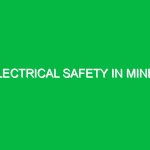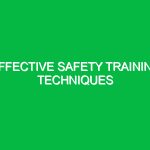In the ever-evolving landscape of workplace safety, the importance of robust Training and Education in the Health, Safety, and Environment (HSE) domain cannot be overstated. Training and education serve as the backbone of safety culture in organizations, ensuring that employees are not only compliant with regulations but are also equipped with the skills and knowledge to identify hazards, mitigate risks, and respond effectively in emergencies. This article delves into the nuances of training and education in HSE, exploring its significance, associated risks, safety precautions, and regulatory frameworks.
The Importance of Training and Education in HSE
At its core, training and education in HSE aim to instill a comprehensive understanding of health, safety, and environmental practices among employees. It encompasses a variety of activities, from formal training sessions and workshops to on-the-job learning and continuous professional development. For instance, during my tenure at a manufacturing plant, we initiated a training program that included hands-on simulations of emergency evacuations. This initiative not only increased awareness but also fostered a culture of safety that permeated through every level of the organization.
The relevance of training and education in HSE is multi-faceted. Firstly, it helps in compliance with various legal and regulatory requirements that mandate organizations to provide safety training. Secondly, well-trained employees are more likely to identify potential hazards, leading to a proactive approach to workplace safety. Lastly, effective training can significantly reduce the likelihood of accidents and incidents, ultimately protecting the well-being of employees and the environment.
Identifying Hazards and Risks Associated with Training and Education
While training and education are crucial for enhancing safety, they are not without their own hazards. Potential risks associated with training activities can vary widely, depending on the nature of the training and the environment in which it takes place. Here, we identify some common hazards and risks:
1. Physical Hazards
Physical hazards are perhaps the most apparent risks during training sessions. These can include slips, trips, and falls, especially in environments such as construction sites or manufacturing plants. For example, during a safety training session on machinery operation, an unmarked wet floor led to a slip that resulted in an injury. Such incidents underline the importance of maintaining a safe training environment.
2. Psychological Hazards
Training can also lead to psychological stress, particularly in high-stakes scenarios such as emergency response drills. Employees may experience anxiety or fear during simulations, which can hinder their ability to learn effectively. A former colleague once recounted how a particularly intense fire drill left him shaken, impacting his performance in subsequent training exercises.
3. Equipment Hazards
Using training equipment, especially in technical or hands-on training, poses additional risks. Faulty or poorly maintained equipment can lead to accidents. For instance, during a training session on electrical safety, outdated equipment caused a minor electrical shock to one of the trainees, highlighting the necessity for regular maintenance checks on training tools.
Safety Precautions and Best Practices in Training and Education
To mitigate the risks associated with training and education in the HSE domain, several safety precautions and best practices should be implemented:
1. Conduct Risk Assessments
Before any training session, conduct a thorough risk assessment to identify potential hazards. This assessment should consider the environment, equipment, and the specific activities involved. For example, if the training involves working at heights, it is crucial to ensure that proper safety gear is available and that participants are trained on its use.
2. Create a Safe Learning Environment
Ensure that the training venue is safe and conducive to learning. This includes proper lighting, ventilation, and clear signage to indicate hazards. In my experience, a well-organized training area can significantly reduce distractions and promote focus, leading to more effective learning outcomes.
3. Utilize Experienced Trainers
Employ trainers who are not only knowledgeable but also experienced in the specific risks associated with the training content. Their expertise can help participants navigate complex situations and provide real-world insights. A mentor of mine who led safety training sessions always emphasized practical examples drawn from his extensive field experience, which resonated well with trainees.
4. Implement Interactive Training Methods
Interactive training techniques, such as simulations and role-playing, can enhance engagement and retention. These methods allow participants to practice skills in a controlled environment, preparing them for real-life scenarios. For instance, using virtual reality (VR) to simulate hazardous situations has gained popularity, providing a risk-free platform for experiential learning.
5. Encourage Open Communication
Foster an atmosphere where participants feel comfortable voicing their concerns and questions. Open communication not only enhances learning but also ensures that any immediate risks are addressed promptly. During a recent HSE training session I attended, the facilitator encouraged feedback, leading to a valuable discussion about safety practices that many had not considered.
Regulatory Framework Governing Training and Education in HSE
Various regulations and standards govern training and education in the HSE domain. Familiarity with these regulations is crucial for organizations to ensure compliance and enhance safety culture. Here are some key regulations:
1. Occupational Safety and Health Administration (OSHA)
In the United States, OSHA sets forth regulations that require employers to provide safety training to employees. This includes training on specific hazards related to their job roles, ensuring that workers are aware of their rights and responsibilities under the law.
2. Environmental Protection Agency (EPA)
The EPA mandates training in environmental safety, especially for employees handling hazardous materials. Compliance with EPA regulations ensures that organizations take necessary precautions to protect both workers and the environment.
3. International Organization for Standardization (ISO)
ISO standards, such as ISO 45001 for occupational health and safety, provide a framework for organizations to establish effective training programs. These standards emphasize continuous improvement, risk management, and employee engagement in safety practices.
Conclusion
Training and education in the HSE domain are indispensable for fostering a culture of safety and compliance within organizations. By identifying potential hazards, implementing safety precautions, and adhering to regulatory standards, organizations can create a safer workplace environment. As the landscape of workplace safety continues to evolve, the commitment to continuous improvement in training and education will remain a pivotal element in safeguarding employees and the environment. Investing in comprehensive training not only protects individuals but also enhances overall organizational efficacy, driving success in an increasingly safety-conscious world.


